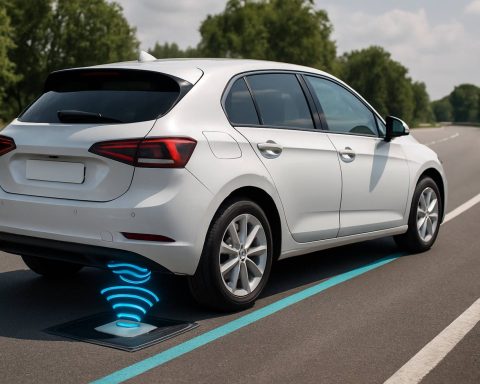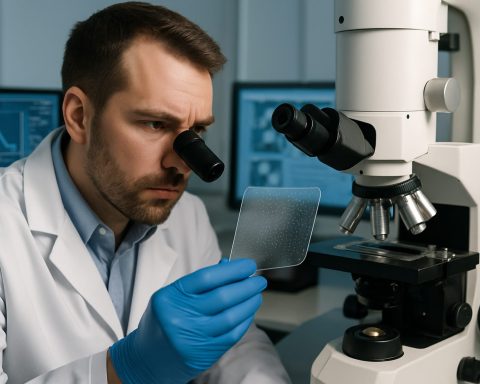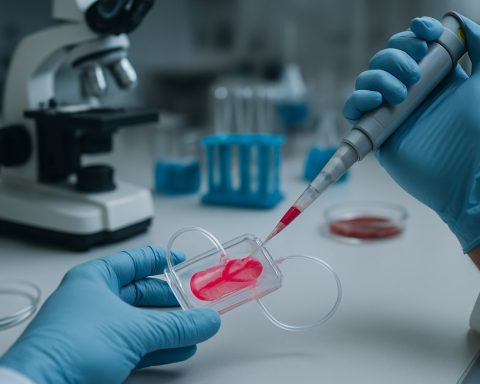- The rise of electric vehicles hinges on lithium-ion batteries, known for fast charging but vulnerable to lithium plating, which can cause overheating.
- A breakthrough by Assistant Professor Weiyu Li introduces a computational model addressing the complexities of ion transport and electrochemical reactions in batteries.
- Li’s research results in a “Li-plating diagram,” aiding researchers and manufacturers in managing battery stability during rapid charging.
- The model provides valuable insights into mitigating lithium plating, potentially leading to safer, longer-lasting batteries for the growing electric vehicle market.
- This development plays a critical role in refining charging protocols and advancing battery materials, balancing speed and safety for consumers.
- The future of battery innovation looks promising, with ongoing efforts in integrating mechanical factors like stress to enhance performance.
- Professor Li’s work heralds a more assured progression in energy efficiency, aligning ambition with cautious strategy.
The hum of electric vehicles zipping down city streets whispers promises of a greener tomorrow. Underpinning this revolution are lithium-ion batteries, famed for their swift charging abilities. Yet, beneath this marvel of modern technology lies a volatile caveat— lithium plating. As metallic lithium accumulates on the anode during rapid charging, battery degradation accelerates, and the specter of overheating looms.
Amidst this electrifying landscape, a breakthrough emerges from the laboratories of the University of Wisconsin-Madison. Assistant Professor Weiyu Li unveils a computational model that navigates the complex dance between ion transport and electrochemical reactions within lithium-ion batteries. This model unravels the mysteries of lithium plating, offering a beacon of clarity against a backdrop of uncertainty.
Professor Li’s model pivots on an analytical expression that correlates the onset of lithium plating with operating conditions and material properties. The result is a pioneering “Li-plating diagram.” Far from abstract, this diagram serves as a practical guide for researchers and manufacturers, mapping out strategies to tame the beast within. Through this lens, fast-charging batteries could be transformed from volatile actors into stable long-distance runners.
The implications of Li’s research ripple outward, promising safer, longer-lasting batteries. As the electric vehicle market burgeons, this guidance stands to play a crucial role in refining charging protocols and developing advanced battery materials. With new insights into mitigating plating, the future looks bright for consumers eager for speed without sacrificing safety.
The quest for perfect batteries is far from over. However, the arsenal of knowledge grows richer, and for the innovators pushing these boundaries, the road ahead is charged with potential. As engineering eyes turn towards incorporating mechanical factors like stress within batteries, the horizon of possibility stretches wider still.
Our pursuit of energy efficiency rides on balancing ambition with caution, and it seems the next chapter has already begun. Technology may charge forward, but thanks to Li’s innovative work, it does so with a steadier and more assured pace.
The Hidden Revolution in EV Batteries: Tackling Lithium Plating With Cutting-Edge Innovation
Understanding Lithium-Ion Battery Challenges
Electric vehicles (EVs) are at the forefront of the push towards a sustainable future, largely powered by lithium-ion batteries known for their rapid charging abilities. However, these batteries come with a significant challenge—lithium plating. This phenomenon occurs when metallic lithium forms on the battery’s anode during fast charging, leading to accelerated degradation and the danger of overheating.
Breakthrough from the University of Wisconsin-Madison
Assistant Professor Weiyu Li from the University of Wisconsin-Madison has developed a promising computational model that enhances our understanding of lithium-ion batteries. The model delves into the interplay between ion transport and electrochemical reactions, offering a solution to the lithium plating issue.
The Li-Plating Diagram
At the core of this model is the “Li-plating diagram,” an analytical expression that links the onset of lithium plating with specific operating conditions and material properties. This diagram provides a strategic guide for researchers and manufacturers, aiming to stabilize fast-charging batteries and extend their lifespan.
Key Insights and Real-World Implications
1. Safer, Longer-Lasting Batteries: The implications of this research are profound, potentially leading to EV batteries that are safer and have longer operational lifespans.
2. Refined Charging Protocols: With deeper insights into lithium plating, manufacturers can develop improved charging protocols that preserve battery health while delivering speed.
3. Advanced Battery Materials: The research encourages the exploration of new materials that can reduce plating, further optimizing battery performance.
How-To Steps for Manufacturers
1. Utilize the Li-Plating Diagram: Implement the analytical insights from the diagram to identify optimal charging conditions and battery materials.
2. Develop Adaptive Charging Algorithms: Create algorithms that adjust charging rates based on real-time battery conditions to minimize plating.
3. Invest in Material Science Research: Focus on discovering or creating new anode materials that are less prone to lithium plating.
Market Forecasts and Industry Trends
– Growing EV Adoption: The demand for electric vehicles is set to soar, pushing innovation in battery technology.
– Increase in R&D Funding: Expect increased investment in battery research, especially in computational models that predict and mitigate degradation phenomena like lithium plating.
Expert Reviews and Comparisons
Professor Li’s research stands out due to its practical implications and innovative approach, compared to existing models that mainly focus on retrospective analysis of degradation.
Limitations and Future Innovations
While Li’s model is groundbreaking, more work is needed to incorporate other factors like mechanical stress and thermal effects in real-world conditions. This offers an exciting avenue for future research.
Actionable Recommendations
For consumers eager for speed without compromising safety, consider EV models from manufacturers who prioritize advanced battery technologies and have implemented Li’s research insights.
Quick Tips for Consumers
– Stay Informed: Choose EVs from companies investing in cutting-edge battery research.
– Follow Charging Guidelines: Adhere to recommended charging practices to enhance battery longevity.
For further information on the advancements in lithium-ion batteries and sustainable transportation, visit University of Wisconsin-Madison. Stay ahead in the sustainability revolution by keeping an eye on these technological progressions.












